Ditapis dengan
E-book Music and Spirituality : Theological Approaches, Empirical Methods, an…
The composer Sir James MacMillan has called music ‘the most spiritual of the arts’, and for many people, both religious and non-religious alike, this rings true.1 But what do people mean by ‘music’ and ‘spiritual’ in this context, and what is the nature of their perceived relationship? Do certain kinds of music more readily afford spiritual experiences than others? What …
- Edisi
- -
- ISBN/ISSN
- 9781805113041
- Deskripsi Fisik
- 480 hlm
- Judul Seri
- -
- No. Panggil
- 781.7 ARN m
E-book Annunciations : Sacred Music for the Twenty-First Century
In Sacred Music in Secular Society, Jonathan Arnold highlights a strange phenomenon: ‘the seeming paradox that, in today’s so-called secular society, sacred choral music is as powerful, compelling and popular as it has ever been’.1 The explosion of new media through the internet and digital technology has created a new, broader audience for ‘the creative art of Renaissance polyphony …
- Edisi
- -
- ISBN/ISSN
- 9781783747283
- Deskripsi Fisik
- 397 hlm
- Judul Seri
- -
- No. Panggil
- 780.72 JAN a
E-book Critical Management Studies in South Africa : Directions and contexts
Critical management studies in South Africa: Directions and contexts’ represents the second formalised work on critical management studies (CMS) in South Africa. Following 5 years after ‘Critical management studies in the South African context’, this book shows how CMS scholarship is starting to develop a character of its own in South Africa. It attests to…
- Edisi
- -
- ISBN/ISSN
- 9781776341900
- Deskripsi Fisik
- 212 hlm
- Judul Seri
- -
- No. Panggil
- 658.4036 GOL c
E-book Papua New Guinea & Solomon Islands
Complemented by easy-to use, reliable maps, helpful recommendations, authoritative background information, and up-to-date coverage of things to see and do, these popular travel guides cover in detail countries, regions, and cities around the world for travelers of every budget, along with extensive itineraries, maps with cross-referencing to the text, "Top 10" and "Top 5" lists, and other pract…
- Edisi
- -
- ISBN/ISSN
- 9781740592079
- Deskripsi Fisik
- 471 halaman, ilus.
- Judul Seri
- -
- No. Panggil
- 910 BUR p
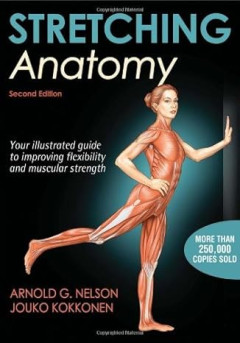
E-book Stretching Anatomy
How much stretching should the average person do every day? Most people tend to overlook this important fitness routine altogether. Those who do stretch tend to perform a very brief routine that concentrates mainly on the lower-body muscle groups. In fact, it would be generous to suggest that people stretch any particular muscle group for more than 15 seconds. The total time spent in a stretchi…
- Edisi
- -
- ISBN/ISSN
- 9781450438156
- Deskripsi Fisik
- 261 halaman, ilus.
- Judul Seri
- -
- No. Panggil
- 611.7 NEL s

E-book Eyewitness: Knight
Detailed photographs trace the origins, heyday, and eventual decline of knighthood, chivalry, and the feudal system. Discover how armor was made, how men became knights, and what life in a medieval castle was like. "Great for reluctant readers."--School Library Journal.
- Edisi
- -
- ISBN/ISSN
- 9780756630034
- Deskripsi Fisik
- 74 halaman, ilus.
- Judul Seri
- -
- No. Panggil
- 929.7 GRA e
E-book Creative Tourism in Smaller Communities : Place, Culture, and Local Re…
Issues arising from overtourism in many of the world’s major cities call into question the adage “bigger is better,” as do touristic desires for au-thentic, human-scale immersion in local life, culture, and knowledge. Overtourism accounts for many headlines, and some of these posit an alternate travel experience—for example, Elaine Glusac’s …
- Edisi
- -
- ISBN/ISSN
- 9781773851907
- Deskripsi Fisik
- 331 hlm
- Judul Seri
- -
- No. Panggil
- 910.2 AND c
E-book The Biology of the First 1,000 Days
According to current estimates, 23% of the world’s children under 5 years of age are stunted, a condition that is measured using short height-for-age (see Box 1.1) [1]. Although this represents a decline from 33% in 2000, the fact that 156 million chil-dren globally still suffer from chronic undernutrition underscores the continued need for renewed efforts and inno…
- Edisi
- -
- ISBN/ISSN
- 9781315152950
- Deskripsi Fisik
- 519 hlm
- Judul Seri
- -
- No. Panggil
- 618.2 ALL t
E-book Cambridge IGCSE Biology Coursebook
This book has been written to help you to do well in your Cambridge International Examinations IGCSE Biology examination. We hope that you enjoy using it. The book can also be used with the Cambridge O level Biology syllabus. There are quite a lot of definitions in the IGCSE syllabus that you need to learn by heart. These are all in this book, at appropriate points in each chapter, inside boxes…
- Edisi
- 3rd ed
- ISBN/ISSN
- 9781107614796
- Deskripsi Fisik
- 350 hlm
- Judul Seri
- -
- No. Panggil
- 570 JON c
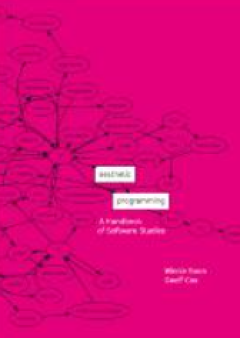
E-book Aesthetic Programming : A Handbook of Software Studies
It has become commonplace to include programming in educational programes at all levelsand across a range of disciplines. Yet this still remains relatively uncommon in the arts andhumanities, where learning to program does not align explicitly with the related careeraspirations. This raises questions about what does or doesn’t get included in curricula, whythis may be the case, and which know…
- Edisi
- -
- ISBN/ISSN
- 9781785420948
- Deskripsi Fisik
- 298 hlm
- Judul Seri
- -
- No. Panggil
- 005.1 SOO a
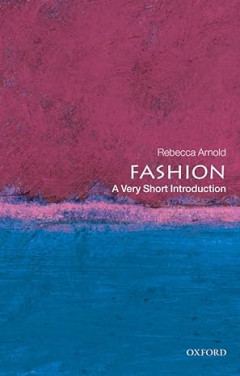
E-book Fashion: A Very Short Introduction
Fashion is a dynamic global industry that plays an important role in the economic, political, cultural, and social lives of an international audience. It spans high art and popular culture, and plays a significant role in material and visual culture. This book introduces fashion's myriad influences and manifestations. Fashion is explored as a creative force, a business, and a means of communica…
- Edisi
- -
- ISBN/ISSN
- 9780199547906
- Deskripsi Fisik
- 157 halaman
- Judul Seri
- -
- No. Panggil
- 646.3 ARN f
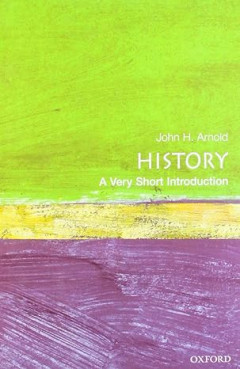
E-book History: A Very Short Introduction
There are many stories we can tell about the past, and we are not, perhaps, as free as we might imagine in our choice of which stories to tell, or where those stories end. John Arnold's addition to Oxford's popular Very Short Introductions series is a stimulating essay about how people study and understand history. The book begins by inviting us to think about various questions provoked by our …
- Edisi
- -
- ISBN/ISSN
- 9780192853523
- Deskripsi Fisik
- 152 halaman
- Judul Seri
- -
- No. Panggil
- 900.0 ARN a
E-book The Merger Mystery : Why Spend Ever More on Mergers When So Many Fail?
In our college days, the economics tradition was pretty confident about the outcome to be expected from merger and acquisition. Adam Smith, the revered grandfather of modern economics, while not addressing M&A directly (there was scarcely any at the time), had in 1776 identified potential sources of gain which are standard elements of merger p…
- Edisi
- -
- ISBN/ISSN
- 9781800647817
- Deskripsi Fisik
- 183 hlm
- Judul Seri
- -
- No. Panggil
- 658.16 MEE t
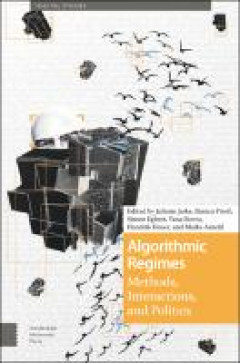
E-Book Algorithmic Regimes: Methods, Interactions, and Politics
Algorithms have risen to become one, if not the central technology for producing, circulating, and evaluating knowledge in multiple societal arenas. In this book, scholars from the social sciences, humanities, and computer science argue that this shift has, and will continue to have, profound implications for how knowledge is produced and what and whose knowledge is valued and deemed valid. To …
- Edisi
- -
- ISBN/ISSN
- 9789463728485
- Deskripsi Fisik
- 348 halaman
- Judul Seri
- -
- No. Panggil
- 518.1 JAR a
E-book Handbook of Fish Biology and Fisheries
According to the United Nations Food and Agricultural Organization (FAO), there was a steady increase of fish catches until the middle of the 1990s when the catch began to level off (Fig. 1.1). Recent work by Watson and Pauly (2001) has shown that in reality the total marine catch of fish has been declining by some 10% a year since 1988. The apparent continued increase until the mid1990s was du…
- Edisi
- Vol. 1
- ISBN/ISSN
- 0632054123
- Deskripsi Fisik
- 420
- Judul Seri
- -
- No. Panggil
- 597 HAR h
E-book Icon on Ice : International Trade and Management of Polar Bears
Polar bears are a charismatic Arctic species and the anticipated effects of climate change on their habitat have gained increasing international attention, making the species a high-profile conservation priority. Changes to the Arctic ecosystem will not only affect polar bears and their habitat, but also the livelihoods of Arctic communities. Hunting polar bears helps maintain cultural identit…
- Edisi
- -
- ISBN/ISSN
- 9780969373063
- Deskripsi Fisik
- 182 hlm
- Judul Seri
- -
- No. Panggil
- 599.7 SHA i
E-book Edible Insects : Future Prospects for Food and Feed Security
This book assesses the potential of insects as food and feed and gathers existing information and research on edible insects. The assessment is based on the most recent and complete data available from various sources and experts around the world. Insects as food and feed emerge as an especially relevant issue in the twenty-first century due to the rising cost of animal protein, food and feed i…
- Edisi
- -
- ISBN/ISSN
- 9789251075968
- Deskripsi Fisik
- 201 hlm
- Judul Seri
- -
- No. Panggil
- 595.7 HUI e
E-book Tales of the five towns
It was an amiable but deceitful afternoon in the third week of December. Snow fell heavily in the windows of confectioners' shops, and Father Christmas smiled in Keats's Bazaar the fawning smile of a myth who knows himself to be exploded; but beyond these and similar efforts to remedy the forgetfulness of a careless climate, there was no sign anywhere in the Five Towns, and especially in Bu…
- Edisi
- -
- ISBN/ISSN
- -
- Deskripsi Fisik
- 246 hlm; 0.4 mb
- Judul Seri
- -
- No. Panggil
- 823 BEN t

Albert Schweiber
- Edisi
- -
- ISBN/ISSN
- -
- Deskripsi Fisik
- 48 hlm;15 cm x 23 cm
- Judul Seri
- -
- No. Panggil
- 266 JOY a
- Edisi
- -
- ISBN/ISSN
- -
- Deskripsi Fisik
- 48 hlm;15 cm x 23 cm
- Judul Seri
- -
- No. Panggil
- 266 JOY a
 Karya Umum
Karya Umum  Filsafat
Filsafat  Agama
Agama  Ilmu-ilmu Sosial
Ilmu-ilmu Sosial  Bahasa
Bahasa  Ilmu-ilmu Murni
Ilmu-ilmu Murni  Ilmu-ilmu Terapan
Ilmu-ilmu Terapan  Kesenian, Hiburan, dan Olahraga
Kesenian, Hiburan, dan Olahraga  Kesusastraan
Kesusastraan  Geografi dan Sejarah
Geografi dan Sejarah